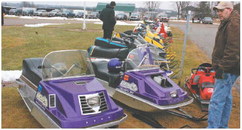State needs to take action to support tourism infrastructure


State leaders need to take action now in order to ensure the tourism industry survives a snowless winter.
There are a handful of things you can count on in...


State leaders need to take action now in order to ensure the tourism industry survives a snowless winter.
There are a handful of things you can count on in...